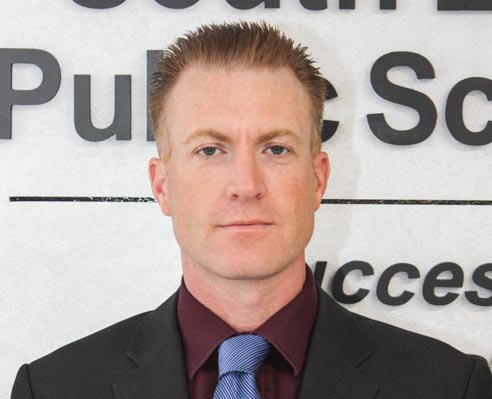WEYBURN - It didn’t take the South East Cornerstone Public School Division board members much time to get down to the business at hand following a two-month break from their public meeting schedule.
Board business had continued during the summer recess, but always with in-camera and informal settings, so this was the first session since their mid-June meeting that the board convened for a public gathering. It was also live streamed from the school division’s head office in Weyburn on Sept. 21.
One major presentation absorbed board room attention. Time was spent with newly installed director of education Keith Keating being joined by Michael Graham, who is the co-ordinator of curriculum; Britney Savage, a Cyber Stone virtual school educator; and Raylene Forseth, mental health consultant diving into an evolving topic of students and their learning environments.
The environments that are dedicated to assisting them achieve success within the Cornerstone system include mental health awareness and assistance.
Keating noted flexibility and understanding were key ingredients to address safety concerns, as students and teachers pursue academic topics as well as being aware of mental health needs and assistance.
With the return to full academic and extra curricular activities following over two years of partial shutdowns due to the COVID pandemic, it was important to once again connect with students’ transition needs, sometimes through counselling sessions or community liaisons they felt.
Responses to intervention, learning support teachers, educational assistants who address intensive needs in some students, are all aware of mental health needs as they unfold.
Keating pointed out that within Cornerstone, just under 96 per cent of the high school students graduate within a five-year period.
Savage led the board members through a compendium of special project adventures taken by students that led to academic credits in Grades 10 through 12. Some subjects were not delivered by teachers but rather, were student driven like special art projects that led to a children’s illustrated book, or special projects in a mechanical world, even when a student was not able to attend one of the division’s two comprehensive schools to engage in shop or special vocation classes with an immediate instructor.
Keating pointed out that sometimes geographic locations worked against the student while Savage noted that by acknowledging these specific desires and talents within the student population, “they discover talents they may have never known they had.”
Mental wellness is not addressed directly, said Savage but recognizing the stigma that affected the environment they are in is important. They could address matters of stress, anxiety and self-care which are some of the issues approached by students as well as educators.
There is a mental awareness program at the senior level developed in Saskatchewan that deals with four units of study that includes an introductory period, prevention, mental health disorders and self-care.
Savage said 36 students were enrolled currently and a good number registered for the next semester at Cyber Stone. That included 27 girls and eight boys who responded to surveys.
“I thought we’d get students who were interested in psychology or social work, but that wasn’t the case,” said Forseth. “Most were seeking their own well being.”
Savage said the mental health program does not absorb a lot of additional teacher time, and since she was a neutral, unbiased party to the program, her office served as a good conduit.
Forseth added some students had engaged with mentors already and others had community liaisons, and it was a positive exchange they could have with Savage, due to her unbiased stance in the processes.
“They could talk with her and she could refer them to a counsellor,” said Forseth.
That, she suggested, was a good thing since some students feel vulnerable in a typical classroom setting.
The concept was to remove barriers, said Savage.
The course includes a mix of academic learning and mental health promotion as students learn about mental health, themselves and opportunities to practice coping skills and self-care.
Graham focused his segment of the presentation on roles and duties of participants in those programs and others. He explained how mentors come into play and how some students have tackled more than one project for credits.
He pointed out how one student, as an example, excelled in a field of costume design, while the previously noted illustrator advanced his skills by taking on additional recommendations such as signage design.
The curriculum co-ordinator went on to say that another group attacked historical developments in mathematics, as another example and although these courses were not provincially developed, they were creditable with the curricula having to be reviewed by a teacher and the school for approval.
Indigenous mentorship programs were also in development stages, he said.
Graham said 156 students that he was aware of, are currently engaged with this type of credit pursuit, but the list continued to grow with the approval of the Ministry of Education that reviews the projects twice a year. He said some courses, such as training for first responders receives a lot of interest and student traffic.
Graham went on to say that South East Cornerstone has had 462 special project credits completed since they first came on board in 2010.
Topics that have received strong participation include such things as high performance athletics, 4-H, air cadets, costume design and beginning entrepreneurship.
Chairwoman Audrey Trombley, who returned to the board room for the September meeting following several meetings she had to attend remotely due to health-related issues, said the report on the presentation would be up for adoption by the board at their October public meeting.






